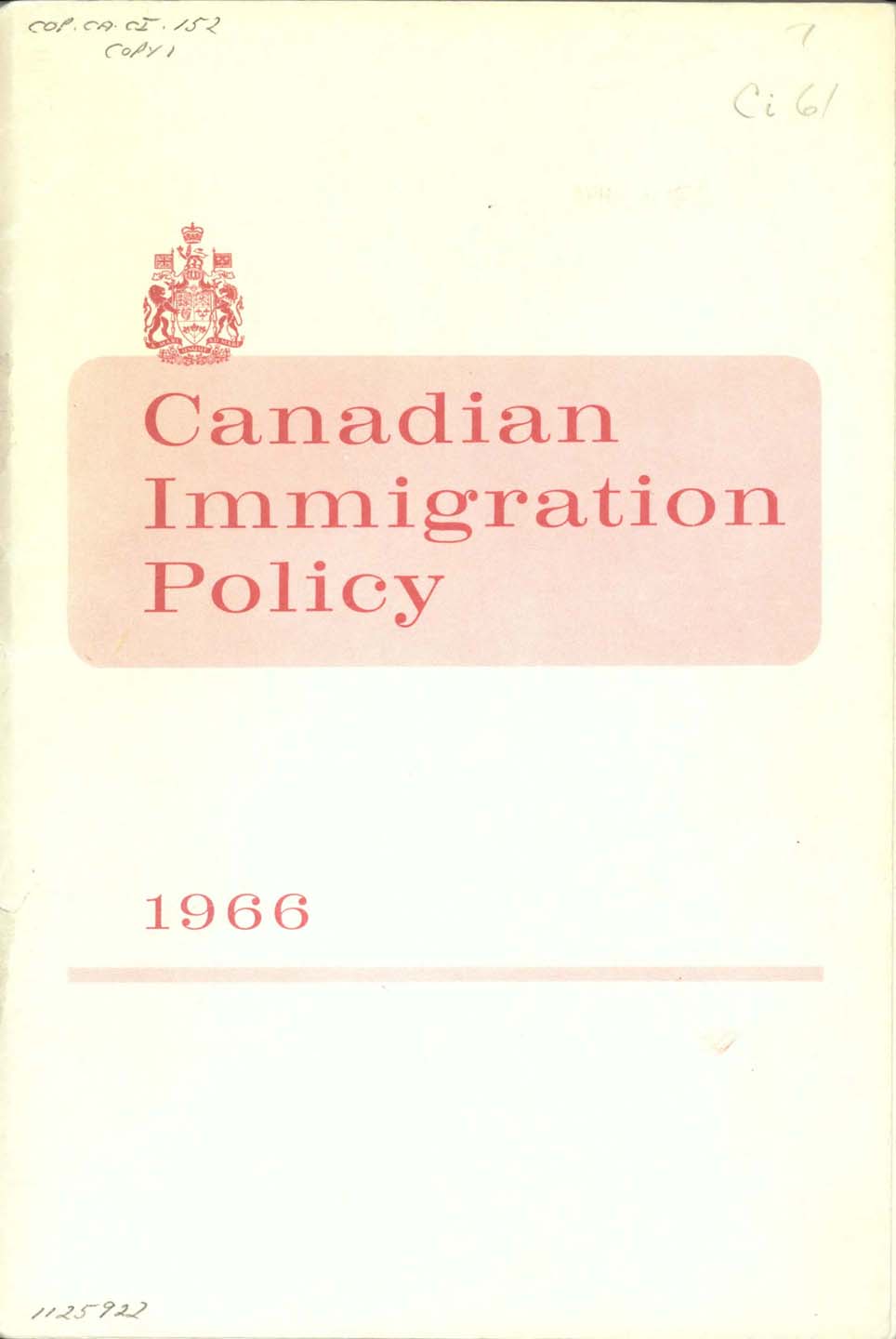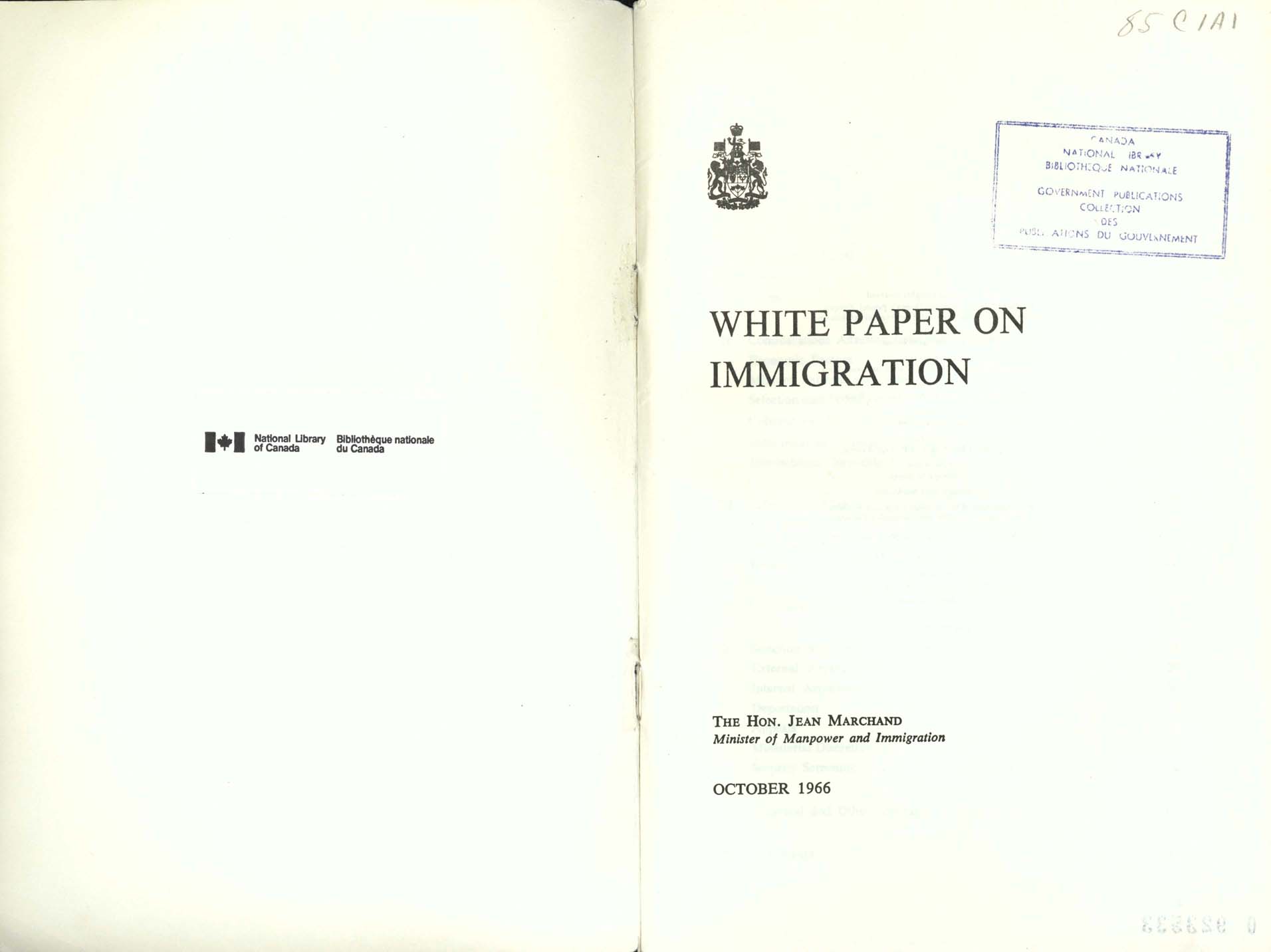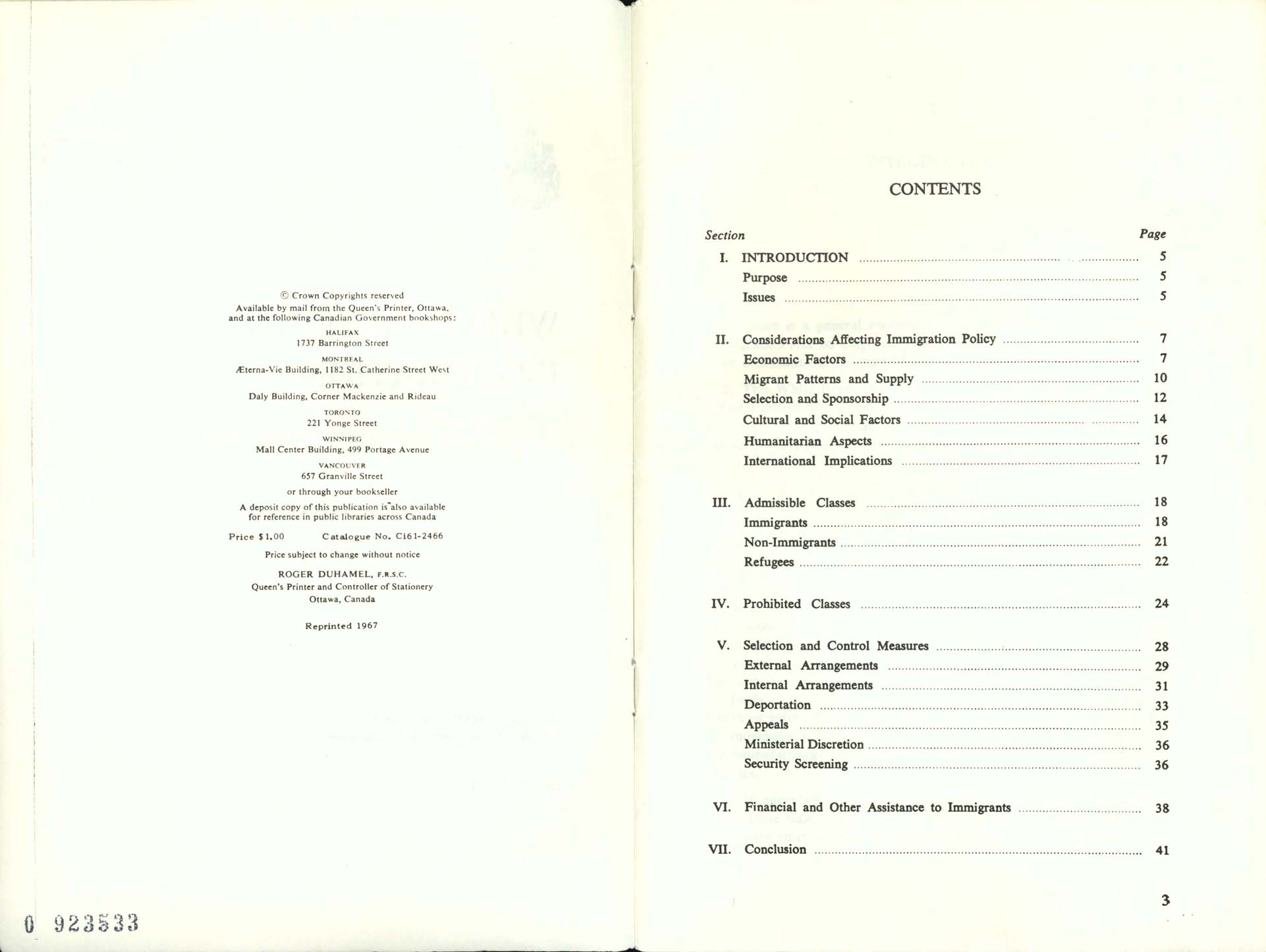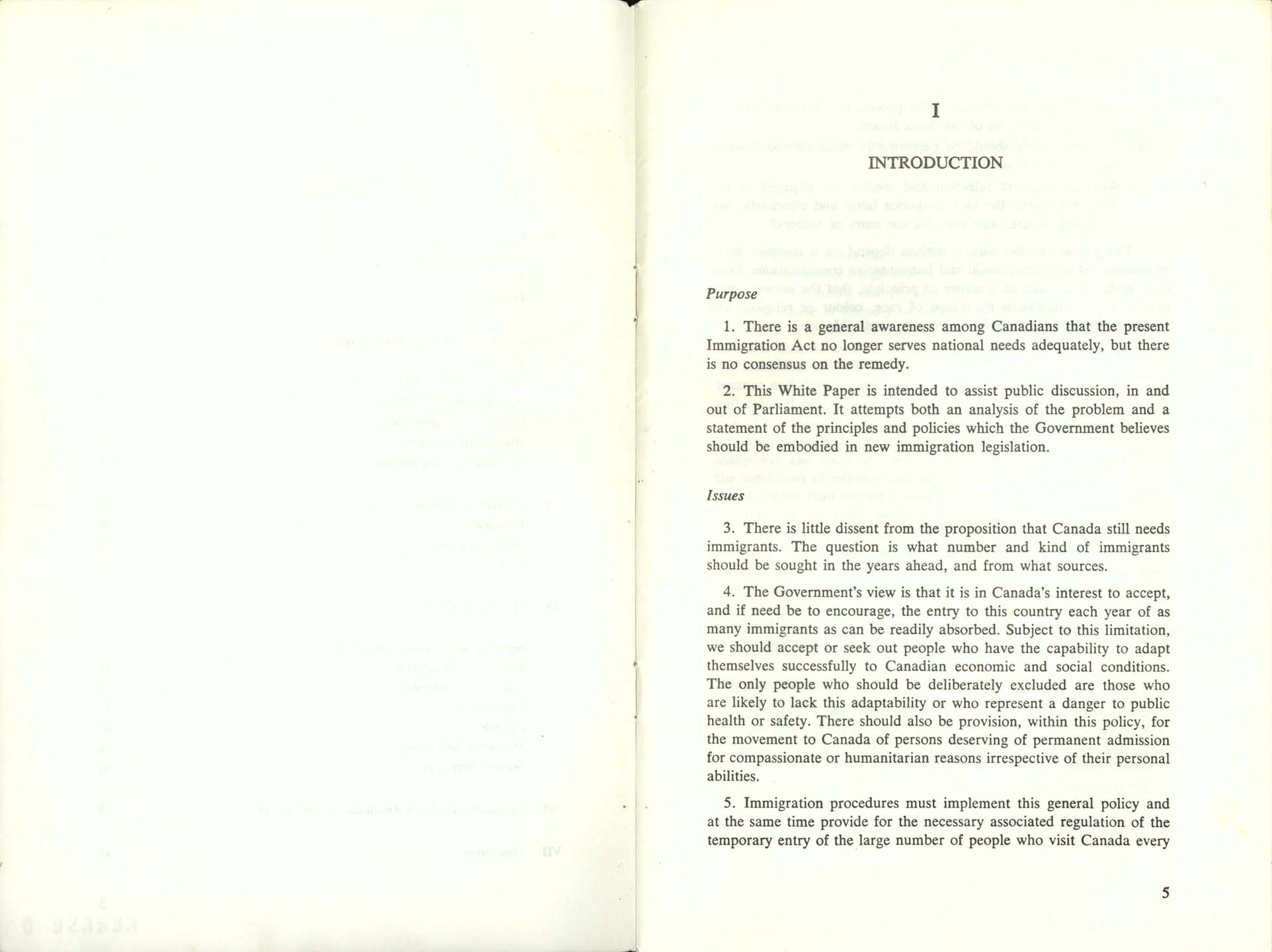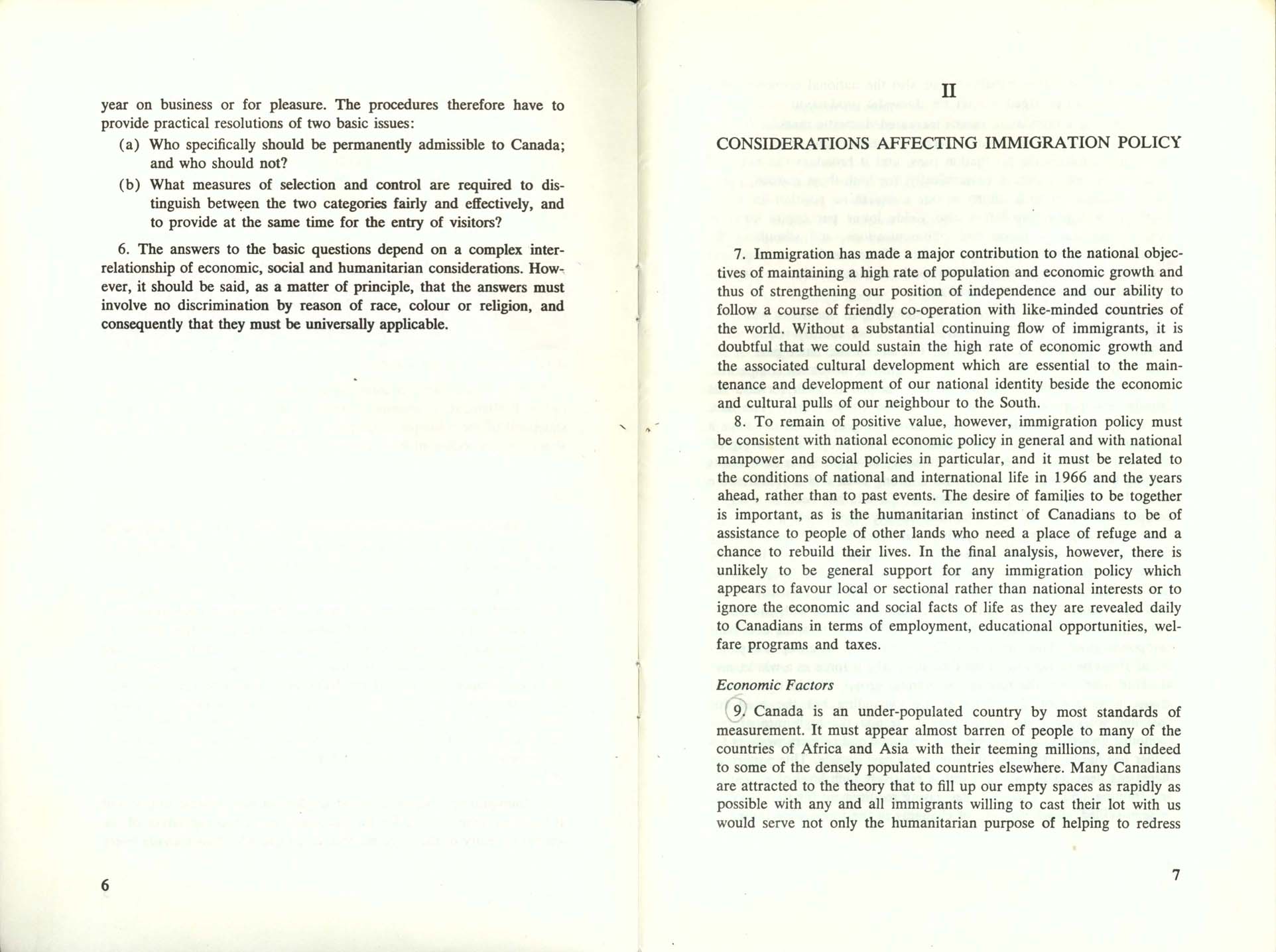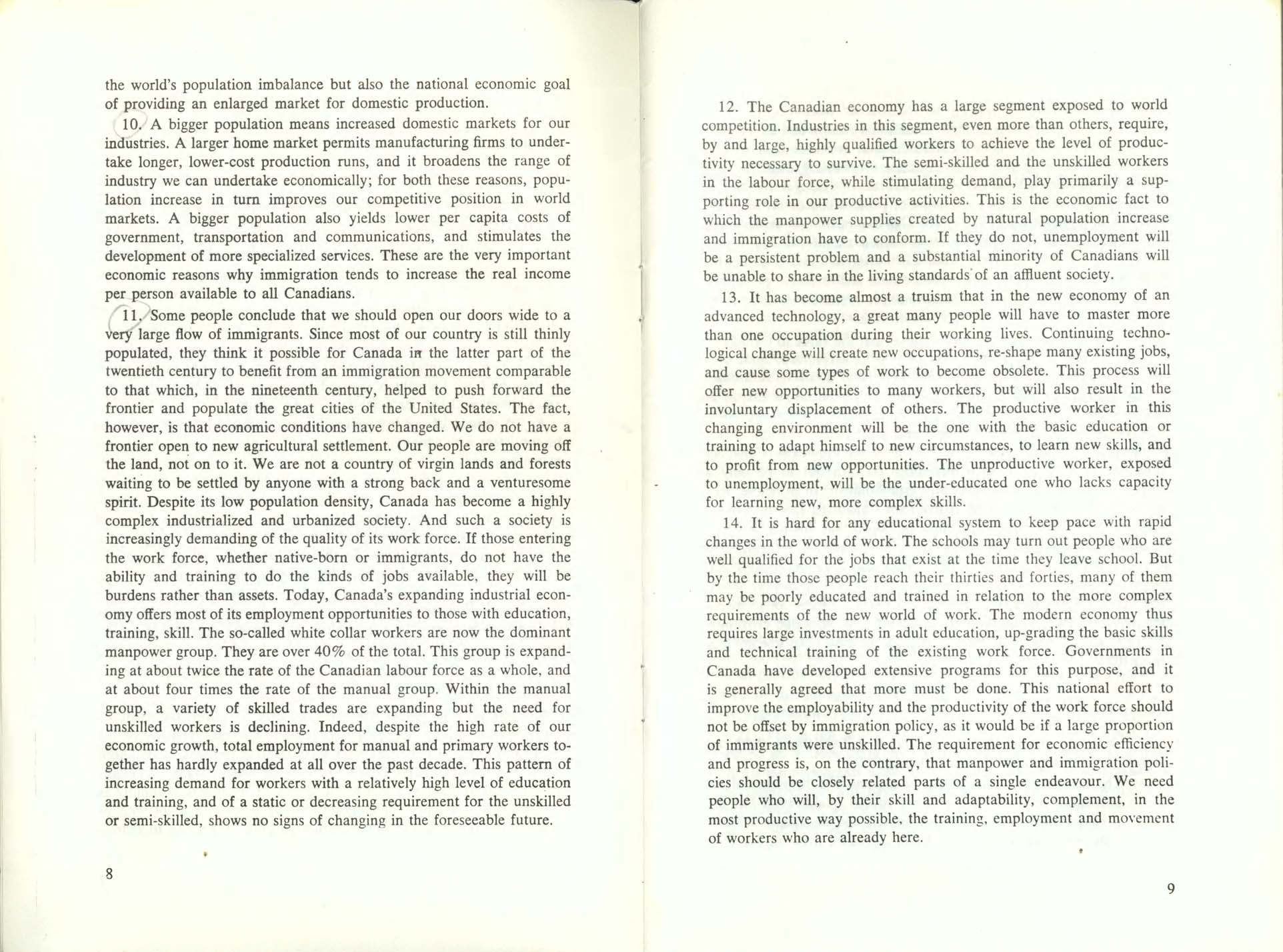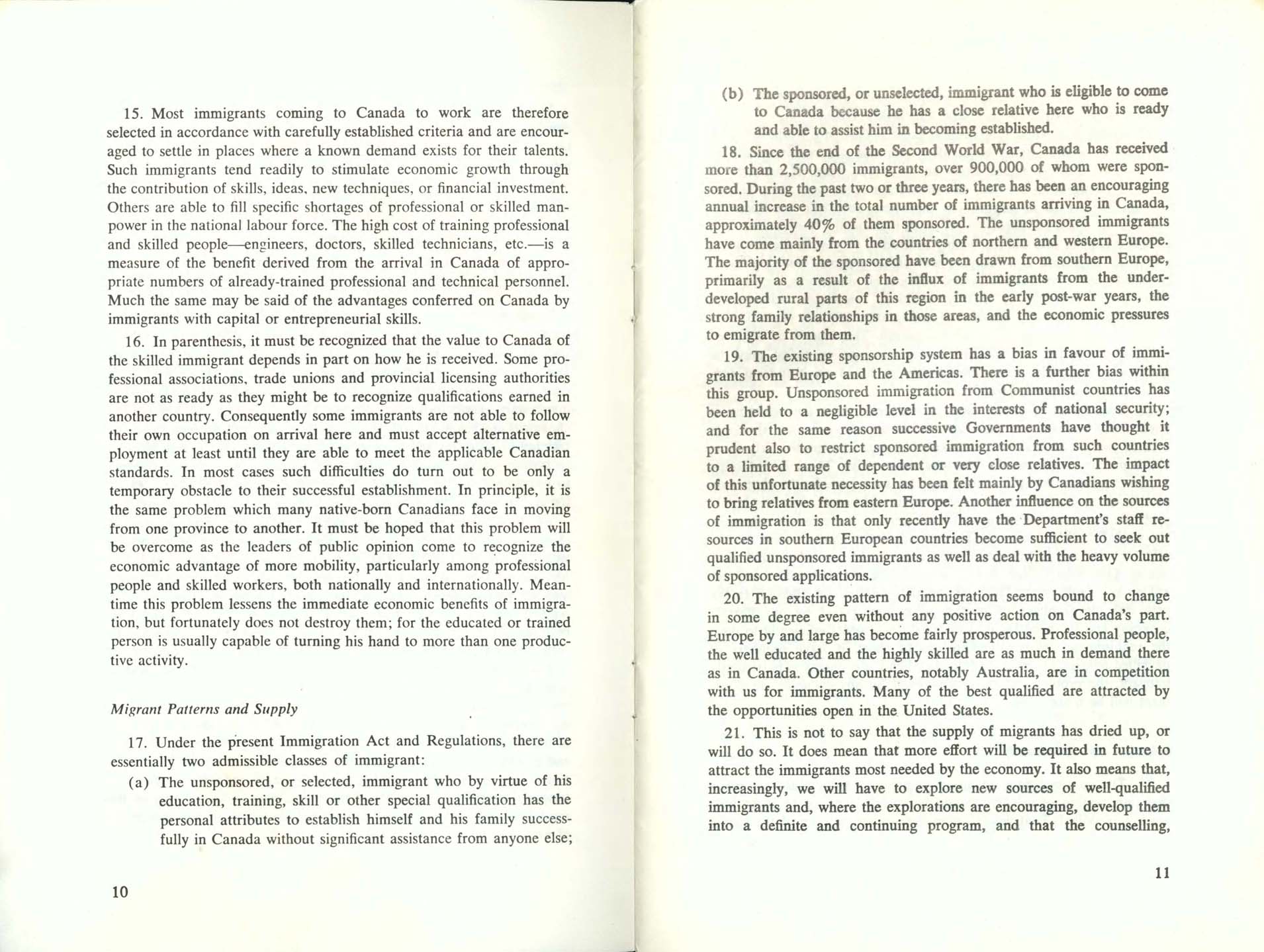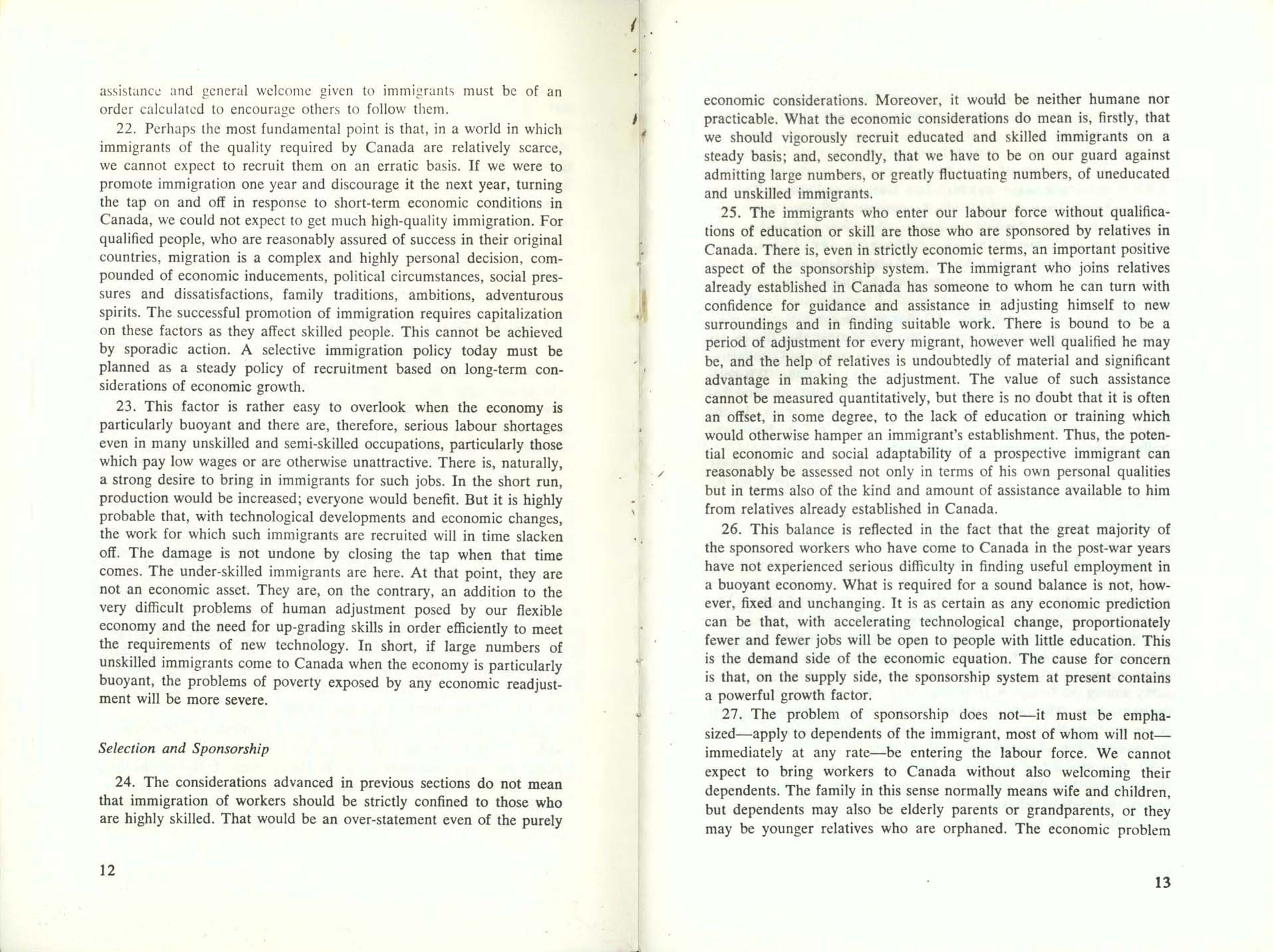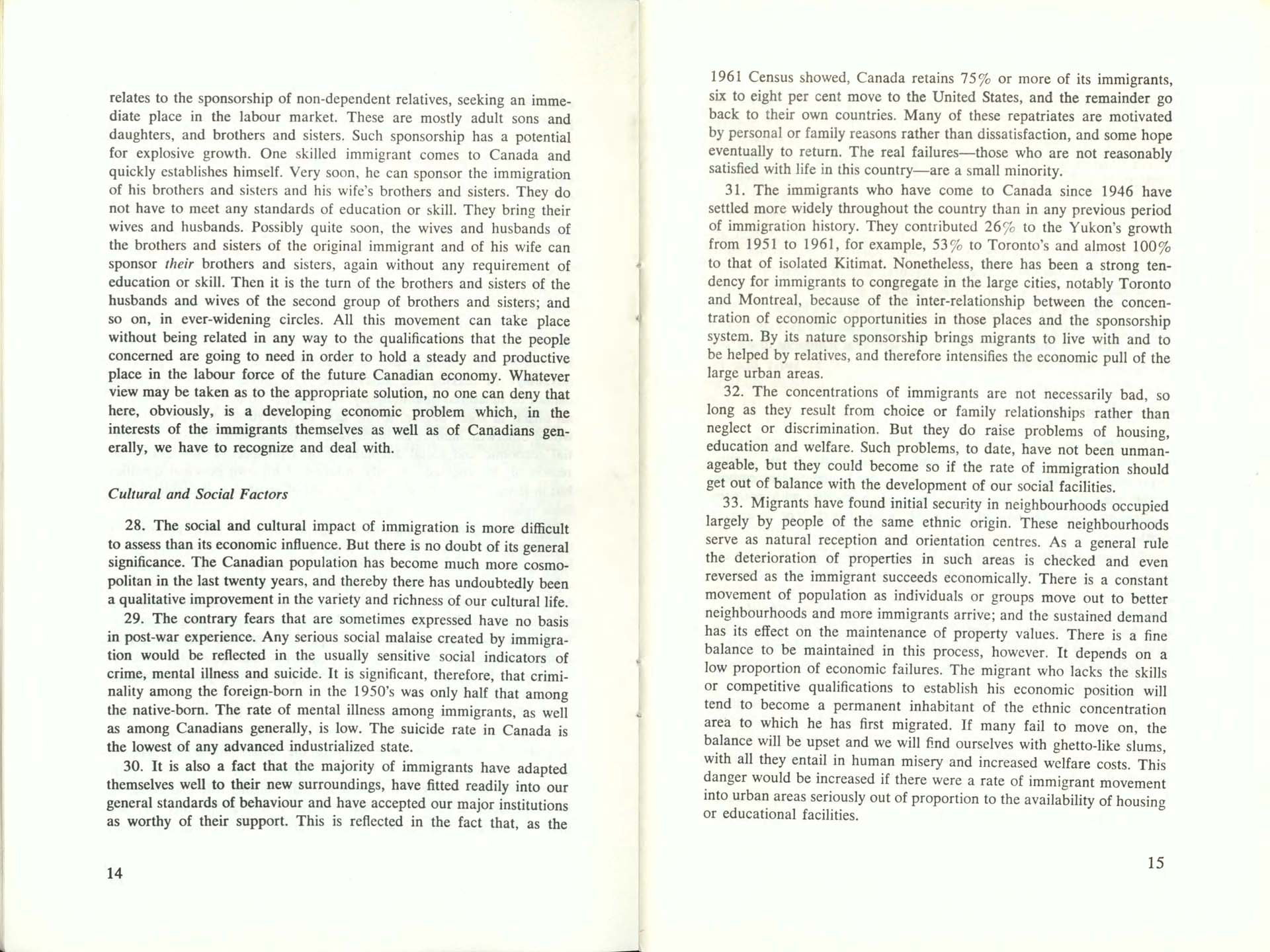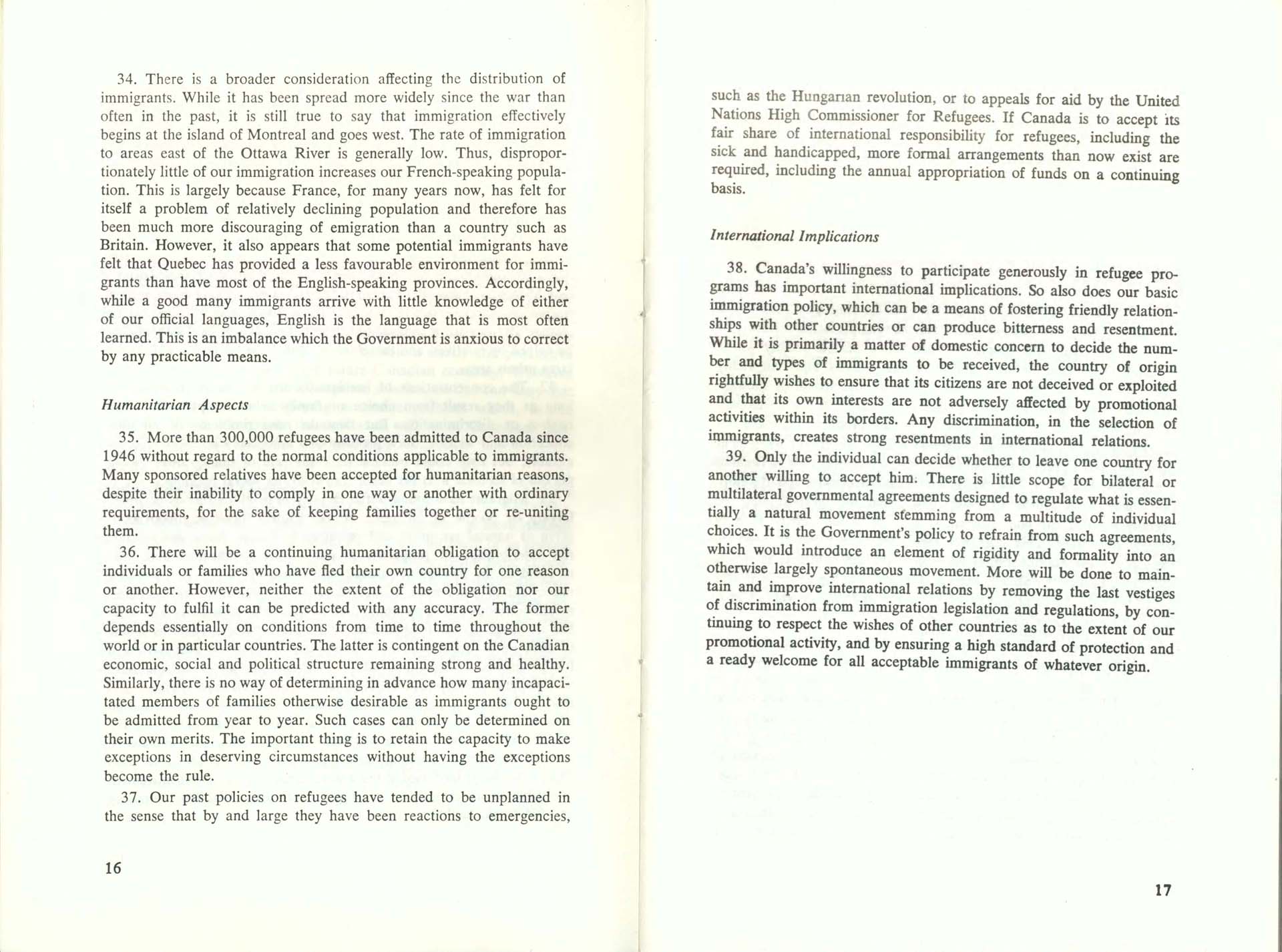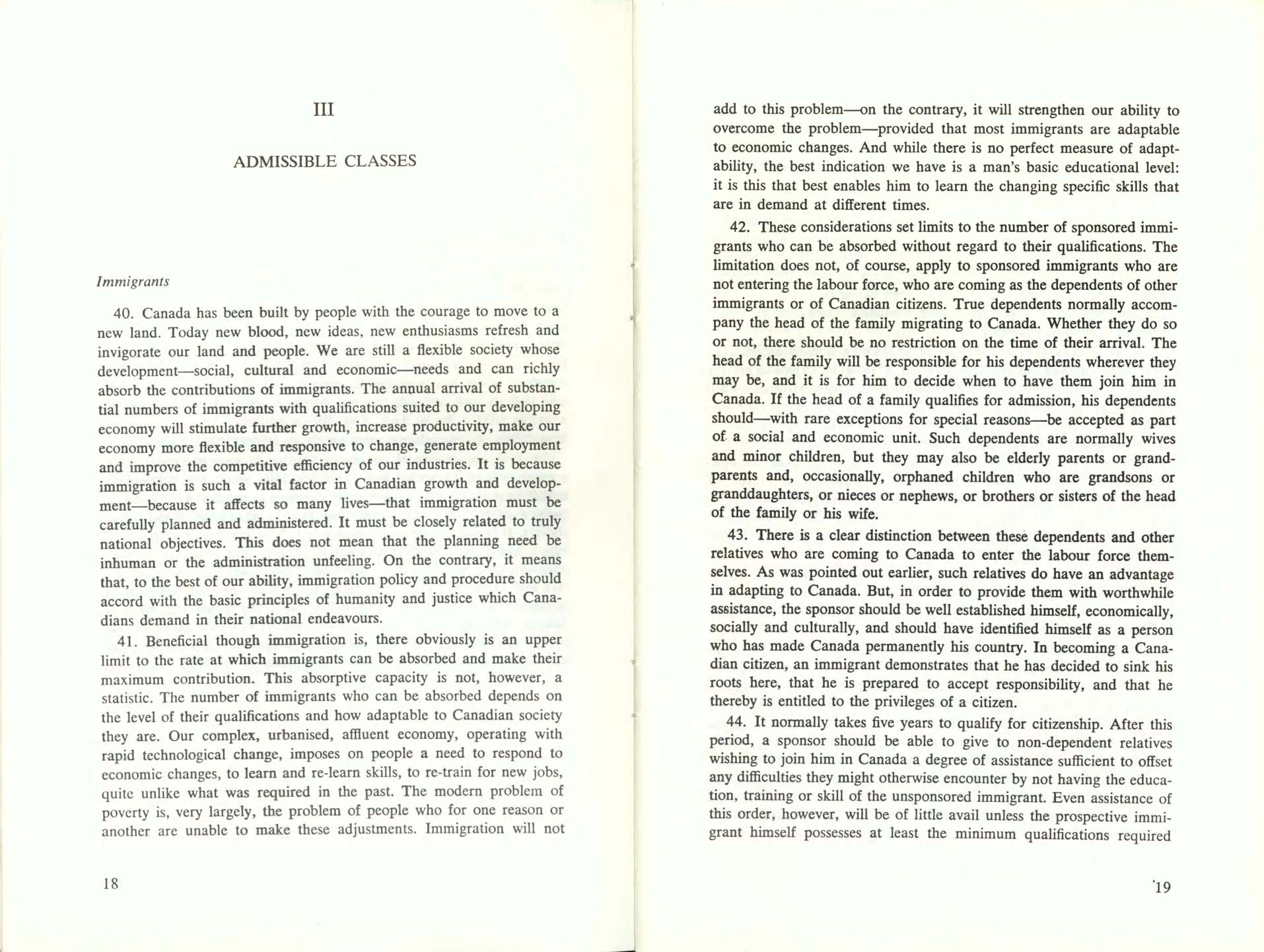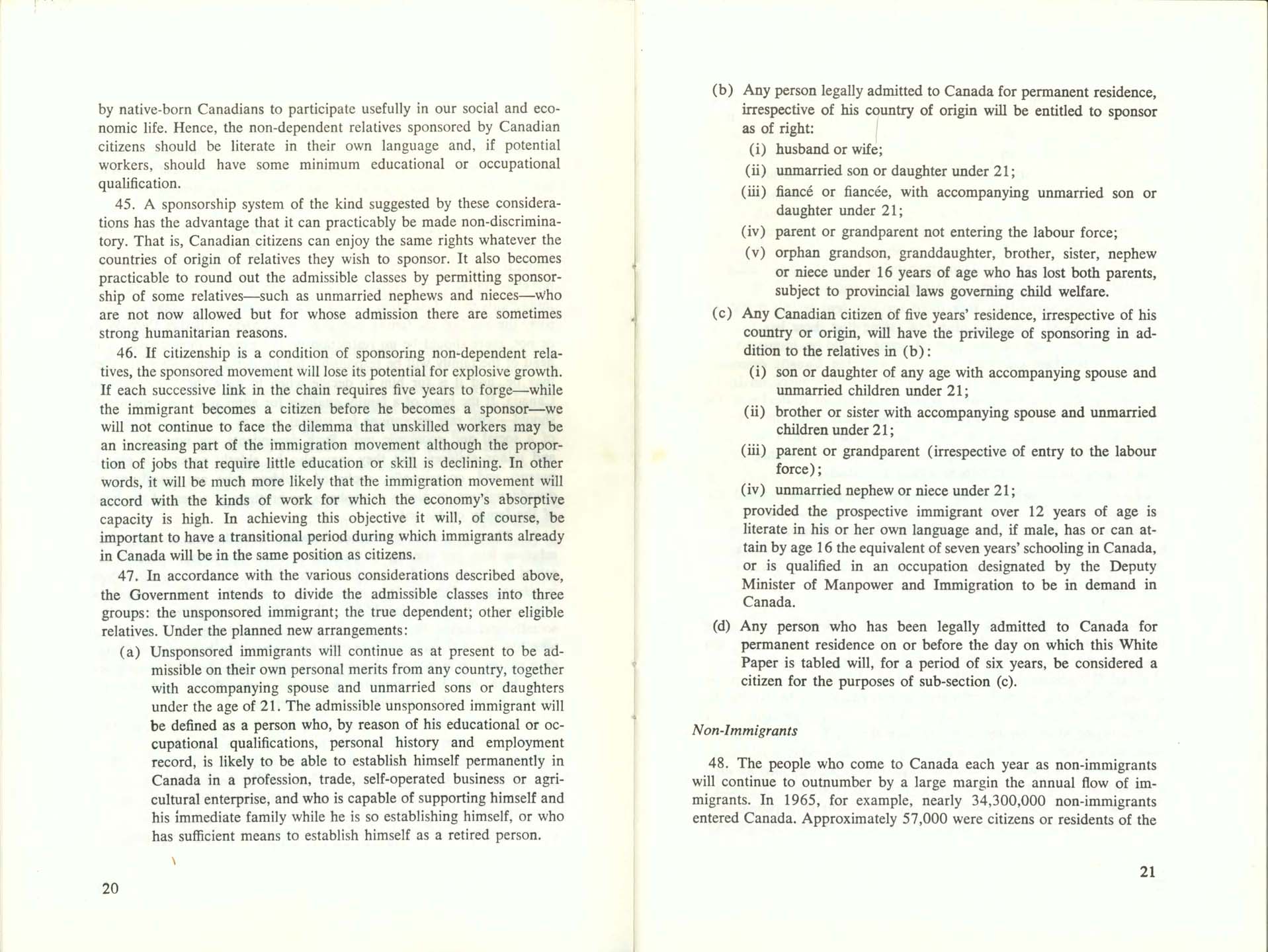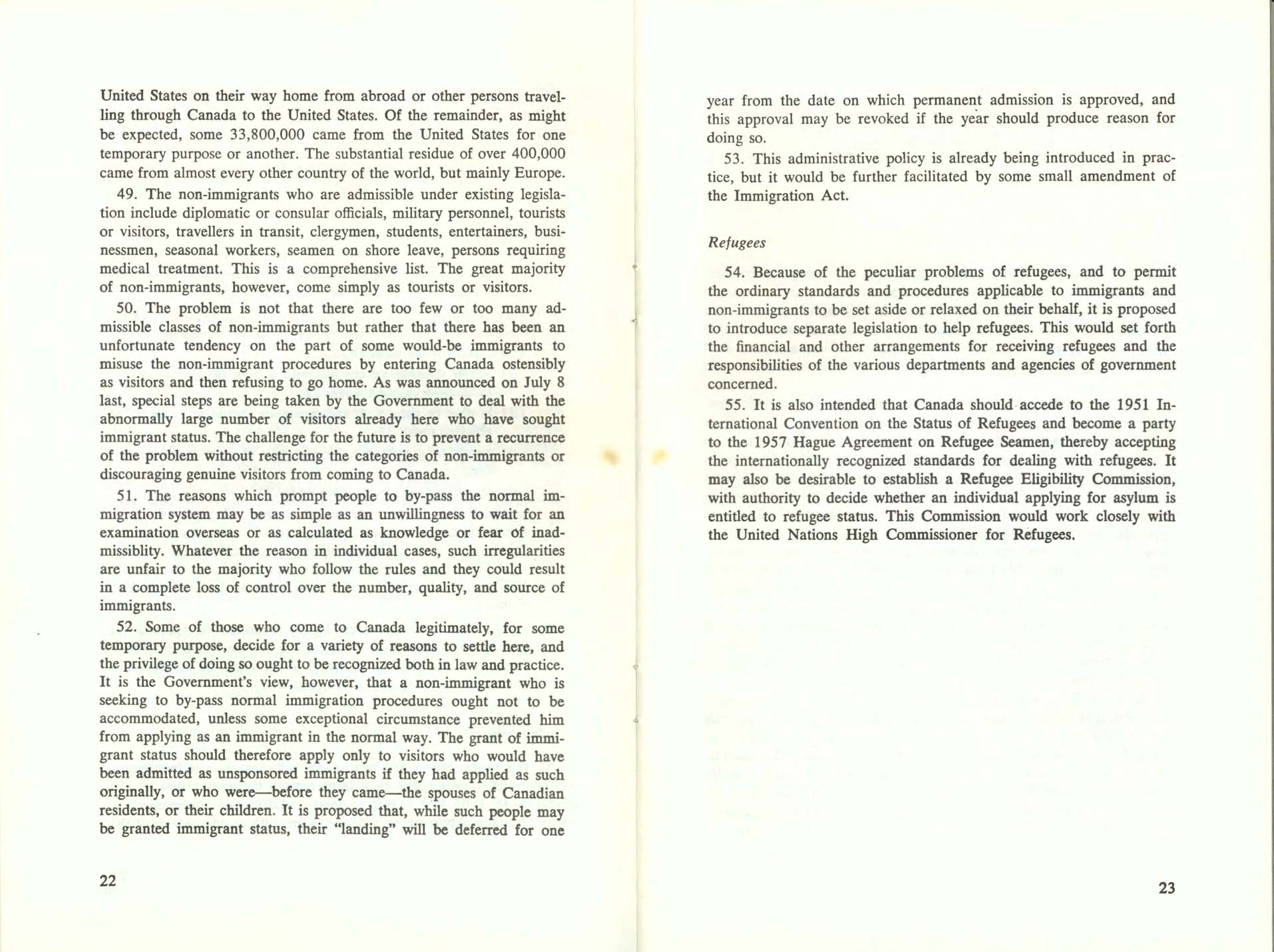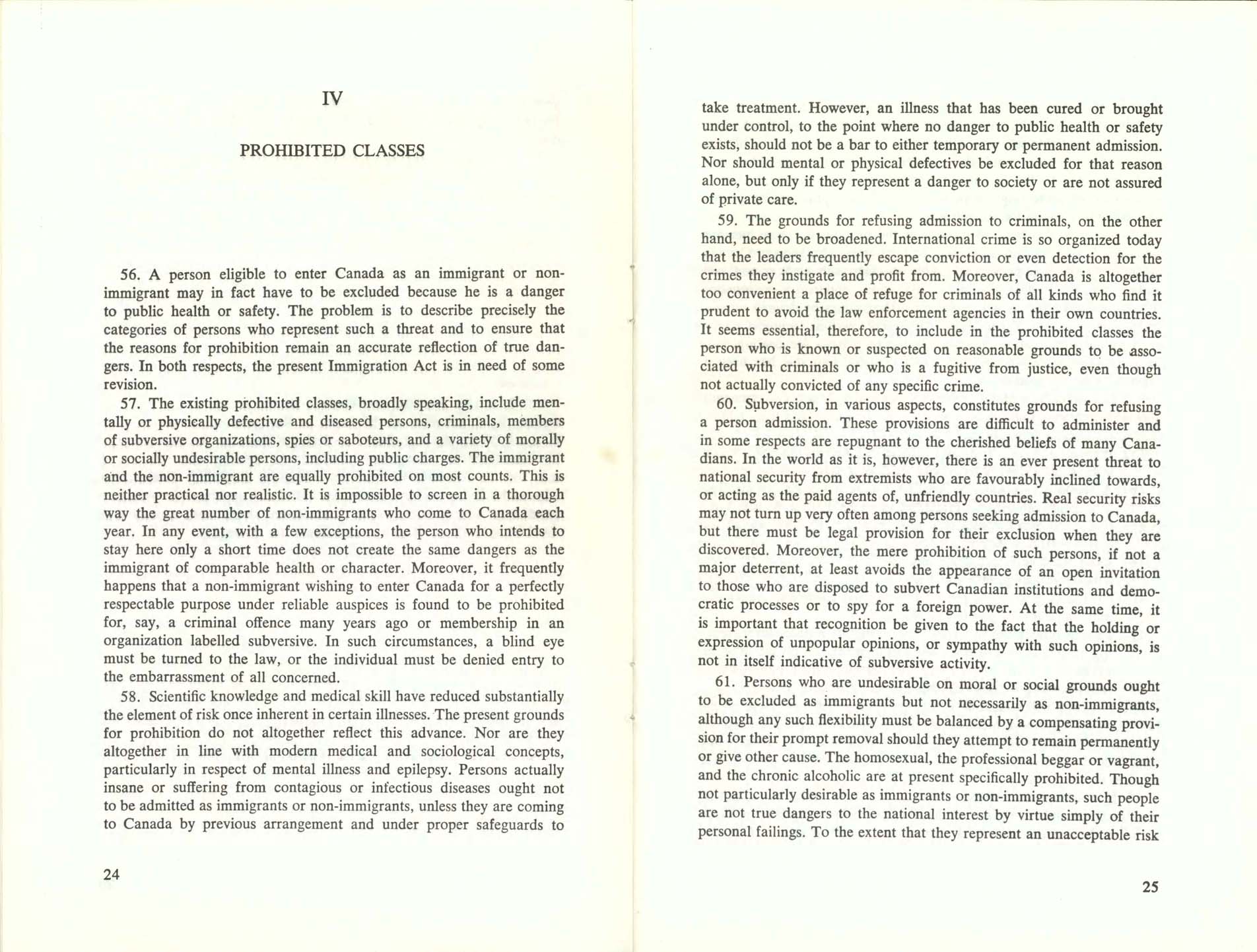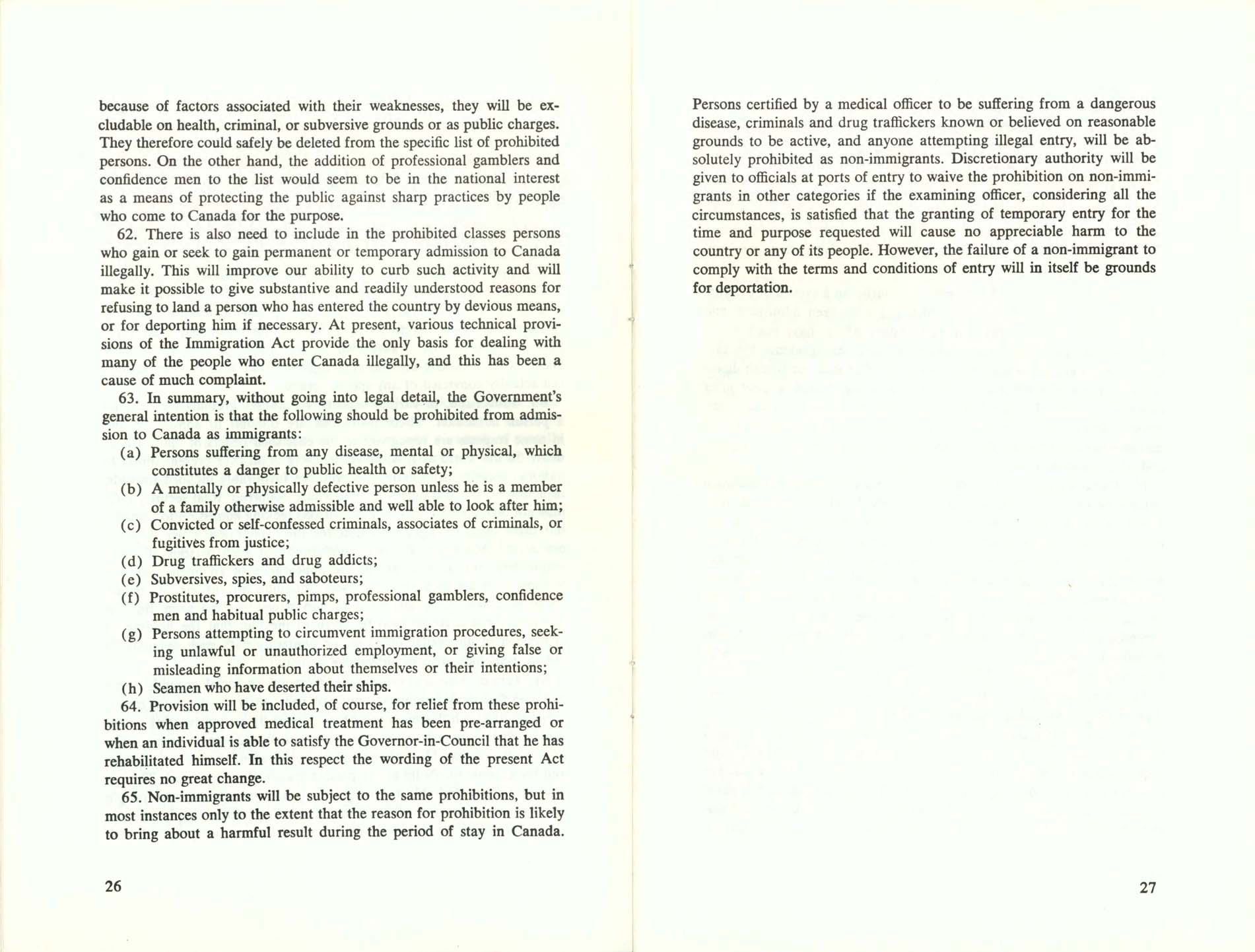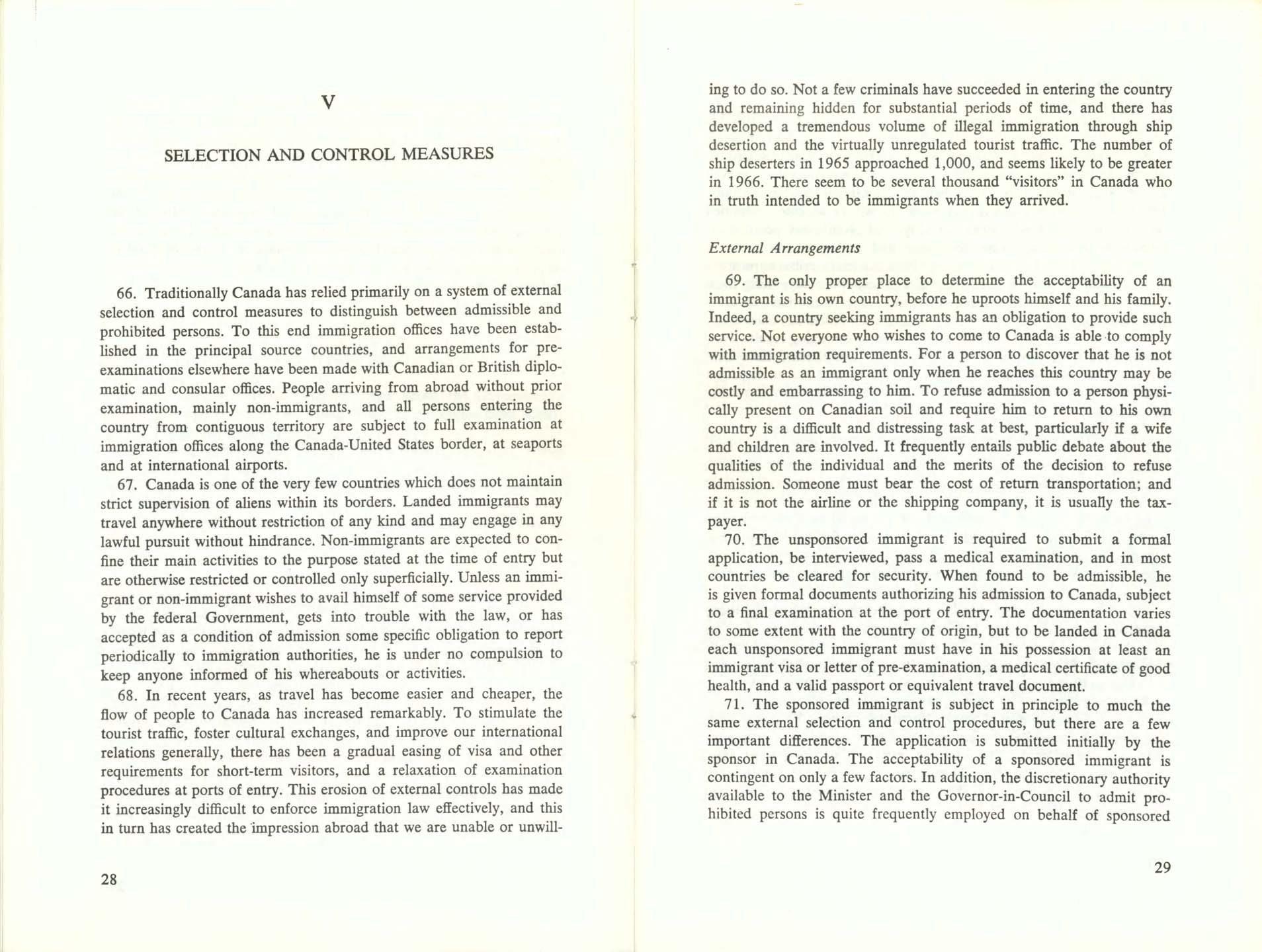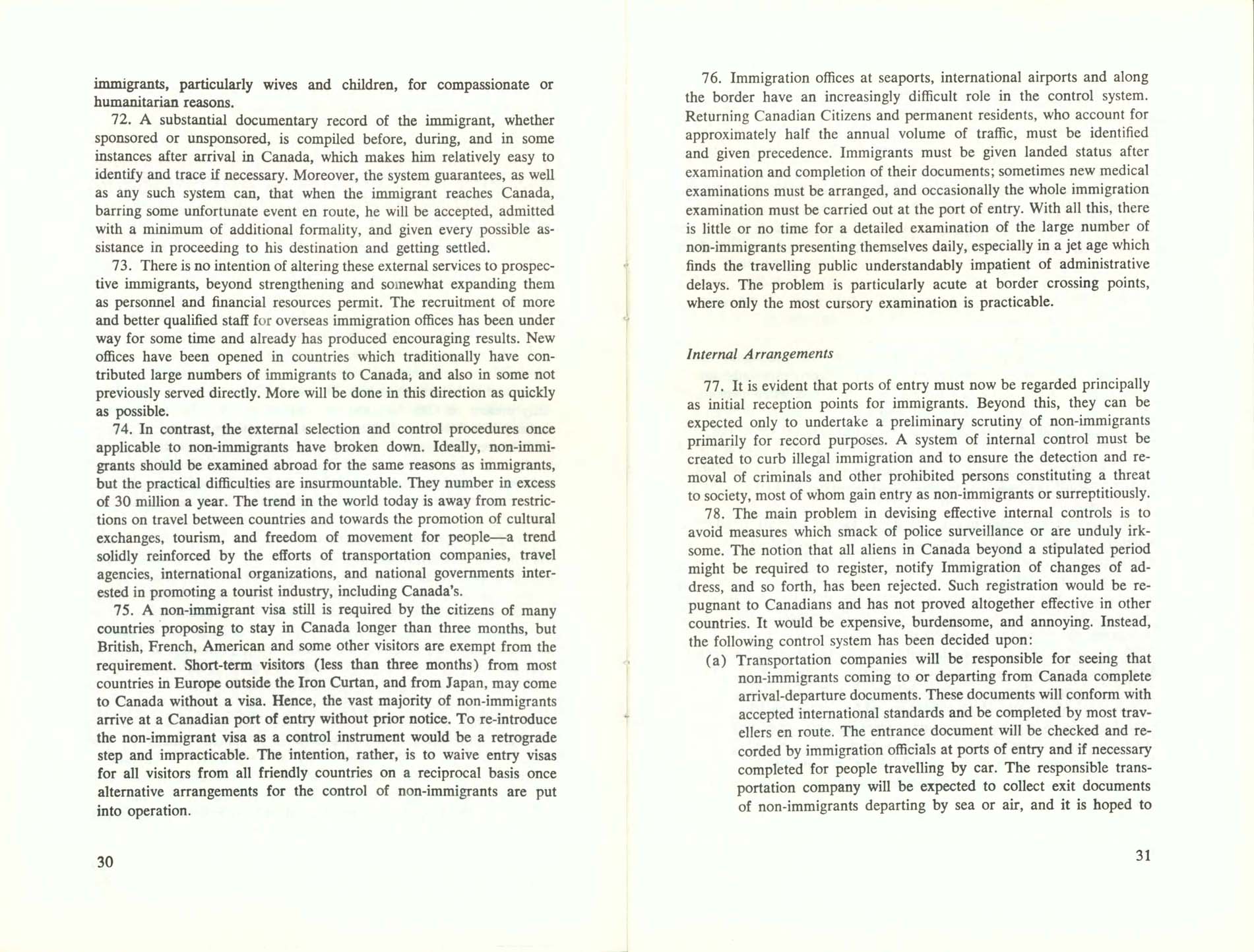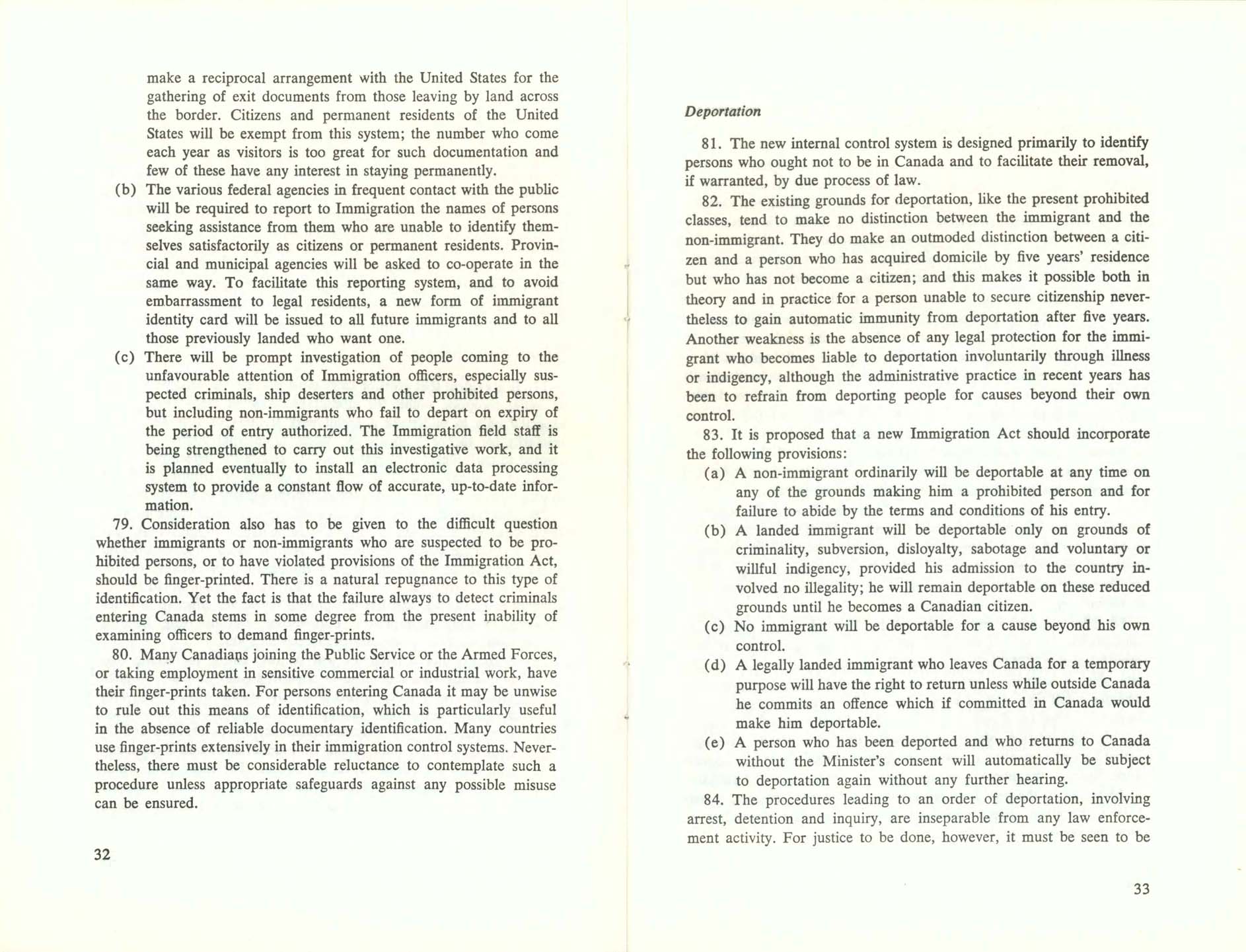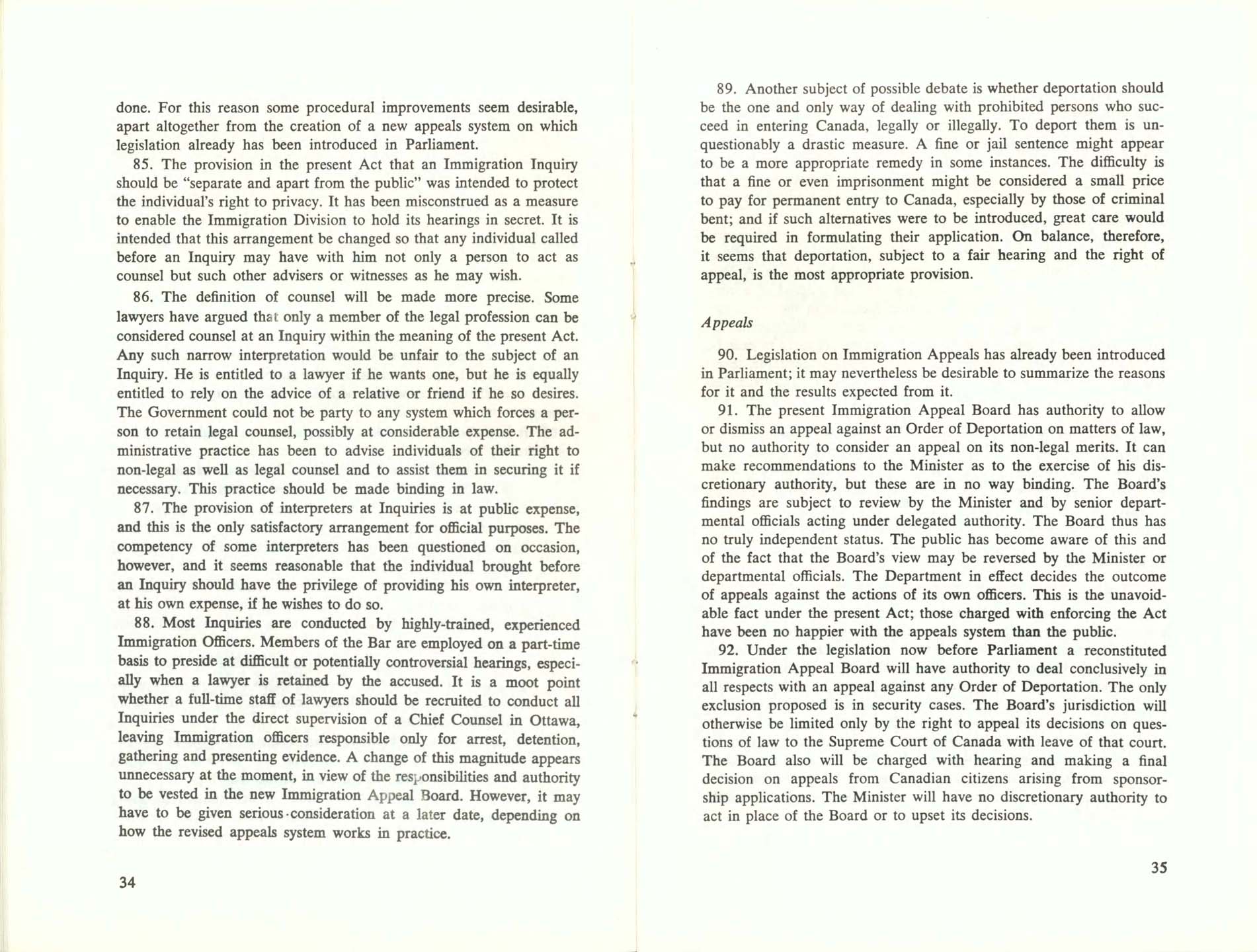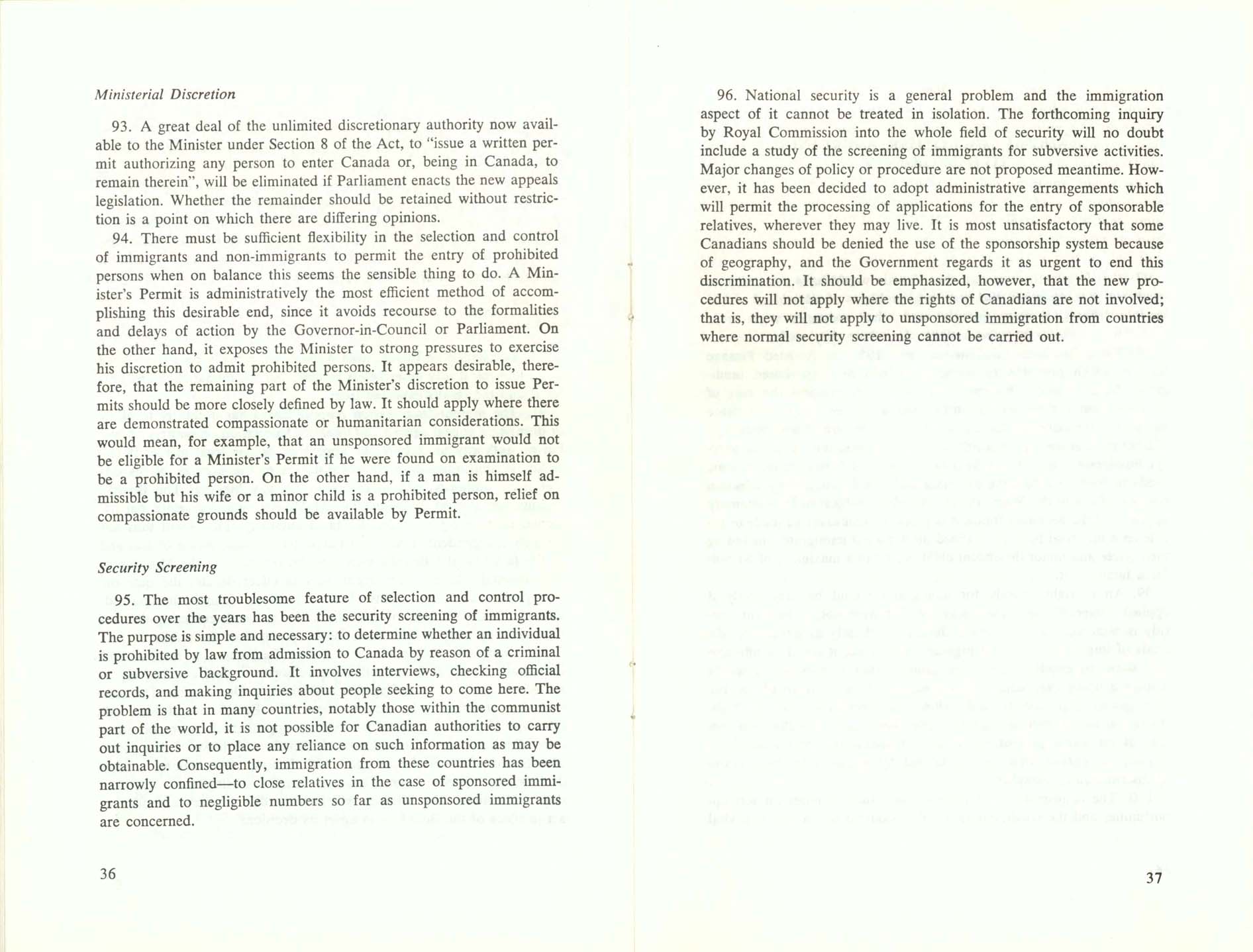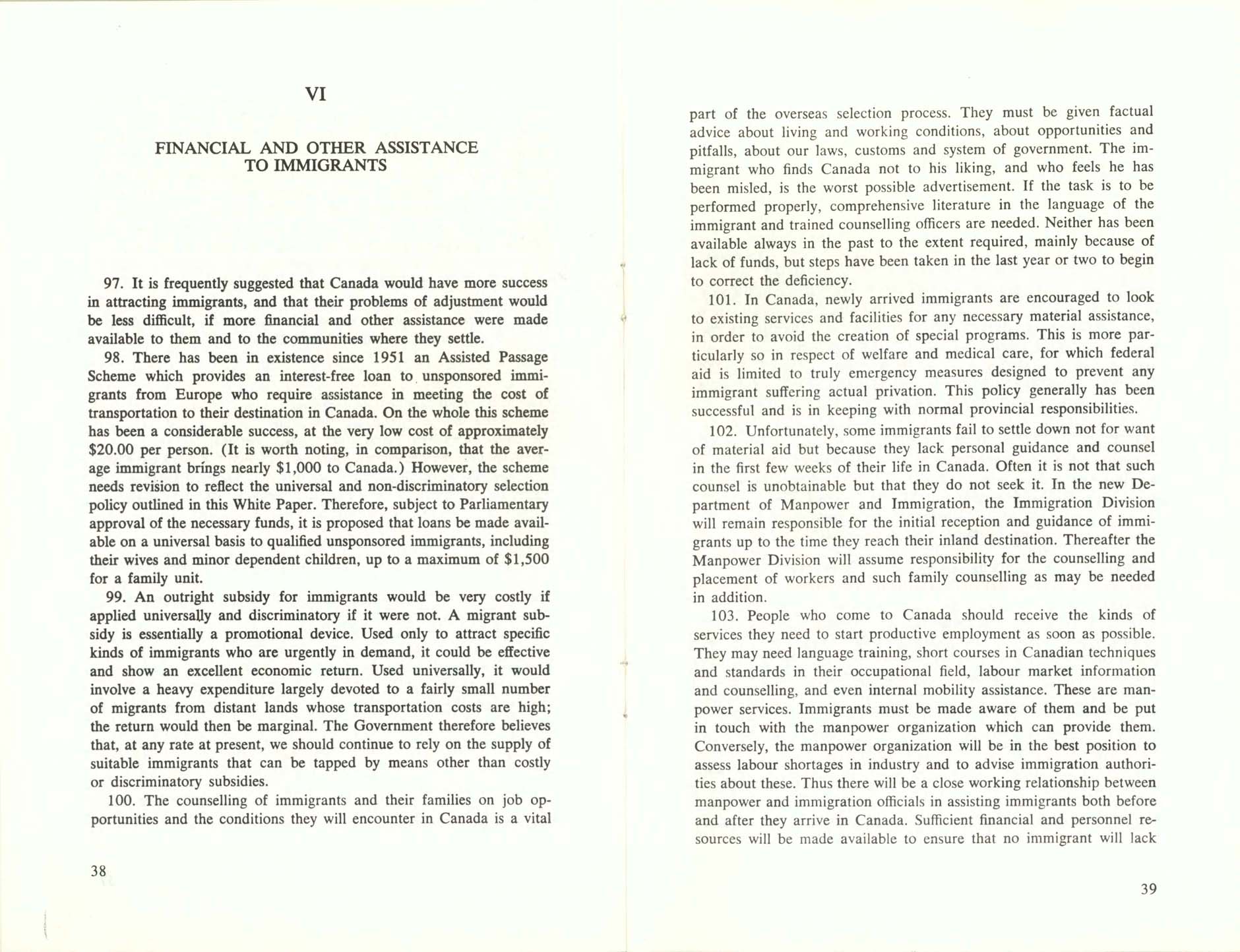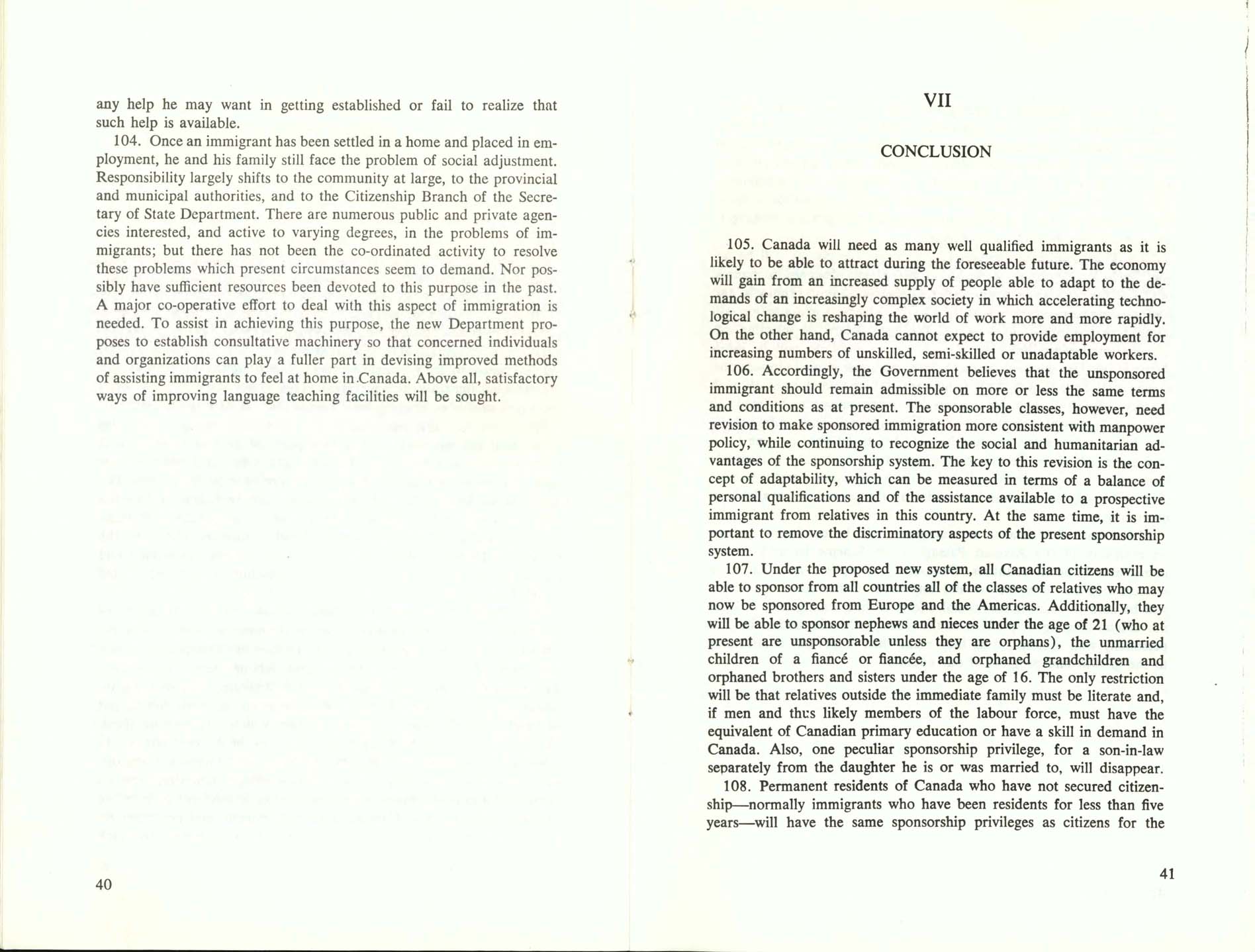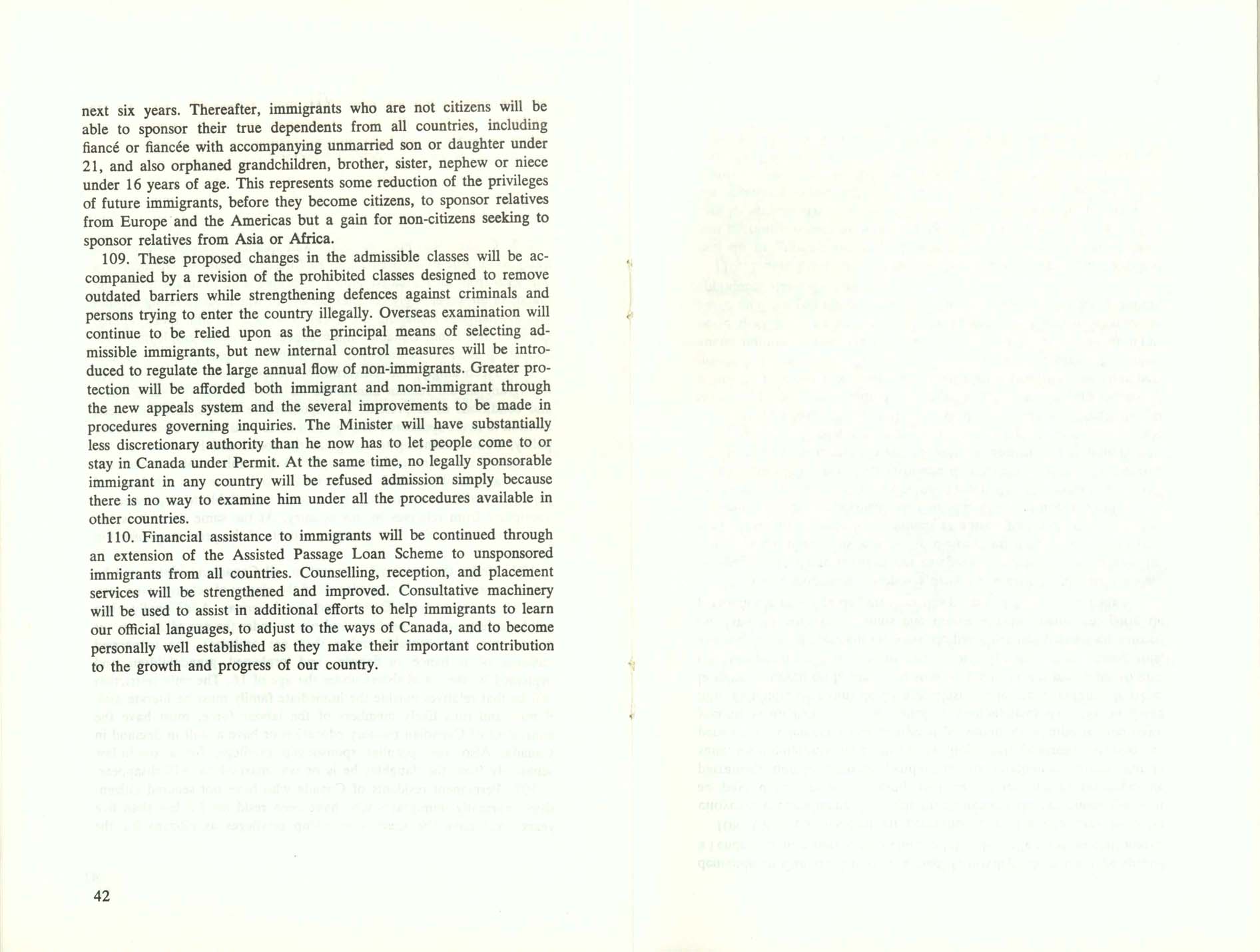The White Paper on Immigration was a policy document commissioned by the Liberal government of Prime Minister Lester B. Pearson to review immigration legislation and make recommendations on its restructuring. A major review of policy was deemed necessary in response to the changing Canadian economy. Skilled workers were increasingly in demand as manufacturing, managerial, professional and technical occupations grew in importance.[1] Despite this economic shift, the immigration rate of unskilled and undereducated sponsored immigrants remained high, contributing to growing unemployment.[2]
The White Paper on Immigration was tabled in Parliament in 1966 by Jean Marchand, the minister in charge of the newly formed Department of Manpower and Immigration. The report called for a greater alignment of immigration policy and long-term economic interests.[3] Due to the rapid technological changes in the economy, it argued that Canada should focus on recruiting qualified immigrants and tighten the controls on the sponsorship system to avoid an influx of unskilled labourers.
The existing sponsorship system allowed Canadian citizens and permanent residents to sponsor relatives for immigration, regardless of their skills, education or qualifications. Under the proposed new system, Canadian citizens would be permitted to sponsor a broader range of dependent and non-dependent relatives, but landed immigrants would be limited to sponsoring their immediate dependents. The report further suggested that non-dependent relatives of Canadian citizens should, at a minimum, be literate in their own language and, if intending to enter the work force, have some educational or occupational qualifications.[4]
The white paper also recommended making revisions to the prohibited classes of immigrants to remove barriers against those who did not present a true danger to the country, such as homosexuals and chronic alcoholics. At the same time, it called for enhanced protection against criminals and those attempting to enter the country illegally. Existing legislation gave the minister responsible for immigration broad discretionary powers in determining the admissibility of immigrants, but the report recommended placing restrictions on their authority to create a more impartial system.
The ideas outlined in the White Paper on Immigration received considerable criticism. Ethnic groups, labour groups and church organizations specifically opposed the restrictions on sponsored immigration, advocating for a broadening of the sponsored categories.[5] The debate surrounding the white paper compelled the Department of Manpower and Immigration to re-evaluate its policies, leading to the implementation of new regulations in 1967.[6]
Library and Archives Canada. White Paper on Immigration, 1966
- Ninette Kelley and Michael Trebilcock, The Making of the Mosaic: A History of Canadian Immigration Policy (Toronto: University of Toronto Press, 1998), 348.
- Valerie Knowles, Forging our Legacy: Canadian Citizenship and Immigration, 1900-1977 (Ottawa: Public Works and Government Services Canada, 2000), 83.
- Kelley and Trebilcock, 353.
- Kelley and Trebilcock, 352-353.
- Harold Troper, “Canada’s Immigration Policy since 1945,” International Journal 48, no. 2 (Spring 1993): 269.
- Kelley and Trebilcock, 358.
